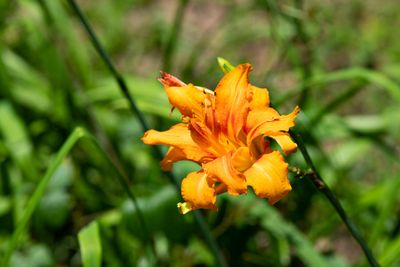When to Cut Back Daylilies
The minimum daylily trimming you should do is an annual tidy up of spent leaves and stems. This is important because it keeps the ground clean and prevents or minimizes the buildup of pests or pathogens. You can do this in late fall or early spring, depending on when you want to put in the effort. If you choose to do the cleanup in the fall, you can wait until the first hard frost before cutting back leaves. In the spring, it’s best to trim just before or as the new green growth is coming up from the ground. Some varieties of daylily are evergreen. These will not brown as easily and you can leave the trimming for spring. You can also trim throughout the summer to keep your perennial beds clean and tidy and your plants healthy. As often as after each bloom is spent or leaf wilts, you can trim back dead material. A good time for a more concerted effort is during late summer when you get a second flush of blooms. Just avoid cutting back the entire plant until late fall or early spring.
How to Cut Down Daylily Plants
Daylily pruning is simple. The scapes, which are the stalks or stems the flowers bloom on, can be cut back right at the base with pruning shears. Alternatively, you can wait until a tug on the scape dislodges it easily. When leaves brown in fall, or after the first frost, cut leaves back using sheers. Cut them to an inch or two (2.5-5 cm.) from the soil. If you use a knife or shears on your daylilies, make sure they are clean and sanitized to avoid spreading diseases. Likewise, remove and discard the leaves and scapes you remove so that the material will not clutter the ground, making a good home for pests.
